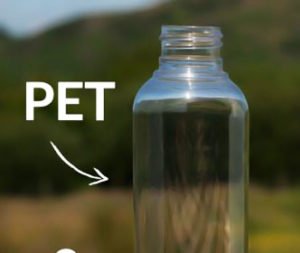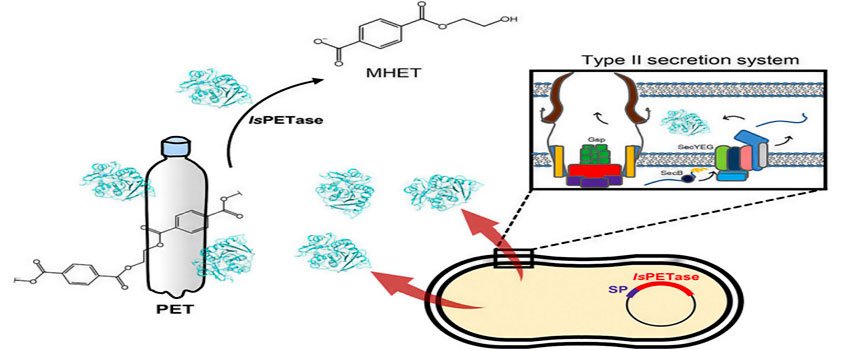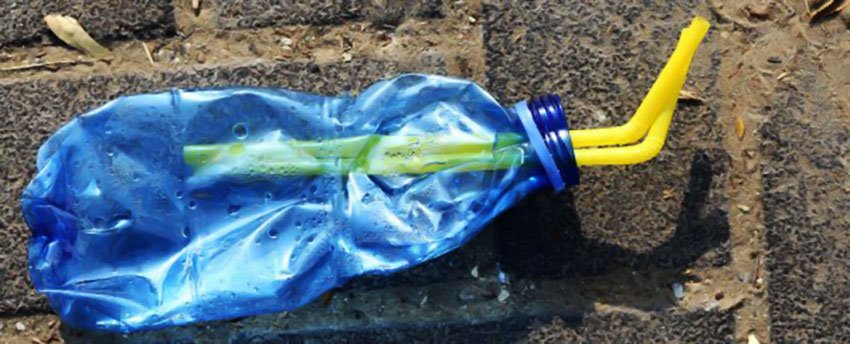Those of you who care a bit about the environment know just how bad plastic pollution has become in recent years. According to a stat, there are now up to 269,000 tons of plastic materials are floating in the ocean, killing 100000 fishes and over 1 million seabirds every year. These shocking facts only ask one question “can’t we do anything about it?”
Well, the future doesn’t seem too dark now because recently scientists have found a way to solve this hideous problem – by accident!
It all started when a group of scientists found a type of bacterium (Ideonella sakaiensis) in a waste dump in Japan in 2016 that had grown to be able to break down the PET (Polyethylene terephthalate) into carbon and energy source. PET is the most common type of polymer that is used for making plastic bottles.
These Japanese scientists were only playing with the enzyme to see what comes out. The result was shocking for them as well as for the whole world. They made the enzyme into a PETase, which is so powerful that it can degrade the plastics within a few days, where it would take around 450 years for them to degrade naturally.
What is PET?
 For more than 50 years, PET plastic has been being used for making bottles. PET falls under the group of plastics call polyesters. An interesting fact about polyesters is that they can be found in nature, like in tree leaves. For millions of years, bacteria have been evolving to degrade those. But in recent years, they have evolved to degrade man-made plastic as well, which is quite hopeful yet unexpected.
For more than 50 years, PET plastic has been being used for making bottles. PET falls under the group of plastics call polyesters. An interesting fact about polyesters is that they can be found in nature, like in tree leaves. For millions of years, bacteria have been evolving to degrade those. But in recent years, they have evolved to degrade man-made plastic as well, which is quite hopeful yet unexpected.
Not all countries recycle plastic bottles in the same manner. Companies mostly use recycled plastics to make polyester fibers.
How PETase Enzymes Can Solve Plastic Pollution Problem?
What is Ideonella Sakaiensis and What is PETase?
 To simply put, Ideonella sakaiensis is a bacterium that can devour plastic bottles. It is interesting how it works. It actually releases an enzyme called PETase. This enzyme can break down the plastic bottle into small pieces so that the bacterium can absorb it.
To simply put, Ideonella sakaiensis is a bacterium that can devour plastic bottles. It is interesting how it works. It actually releases an enzyme called PETase. This enzyme can break down the plastic bottle into small pieces so that the bacterium can absorb it.
There are many bacterial enzymes known to scientists before, but they work very slowly. PETase is far the most advanced enzyme scientists have discovered.
There is new research that figured out the structure of this enzyme. The researchers used an x-ray beam that is 10 billion times brighter than the sun. This helped the researchers identify each atom of the enzyme, therefore figuring out the structure.
The structure of this enzyme is very similar to what many bacteria have been using millions of years to break down the natural polymer of plants. When tweaking the enzyme, they again made if 20% better. According to some scientists, this is just a moderate improvement. It also revealed that enzymes could be engineered to be more effective.
How Can We Use This to Reduce Plastic Pollution?
 The discovery of PETase can revolutionize the way we do recycling. PETase can actually change the whole manufacturing system. PETase can break down the PET plastic to its single blocks, which can be used again and again to create the same plastic.
The discovery of PETase can revolutionize the way we do recycling. PETase can actually change the whole manufacturing system. PETase can break down the PET plastic to its single blocks, which can be used again and again to create the same plastic.
In many places, bioreactors have been being made for degrading plastics. PETase enzymes can be used in those reactors.
But there is another problem. Plastics have been in this world for more than 50 years. Most of them have found their ways to the oceans and landfills.
It is not yet sure whether this enzyme is safe to be sprayed all across the ocean. From the lesson we learned from overusing antibiotics, it can be predicted that if more bacteria start degrading such strong material as PET, several other durable products can also come under threat. Also, the plastic manufacturer would be in big trouble maintaining their plastic bottles to be degraded by bacteria, considering that these bacteria are used widespread.
Many fungi can also degrade plastic. But using the bacteria on an industrial scale will helps us reduce producing new plastic waste.
Final verdict
The bacteria and PETase enzymes should be used only in the industry level. It is true that enzymes are non-toxic and biodegradable. But people should bear in mind that bacteria can evolve over time. If there are now bacteria that are capable of degrading something as strong as man-made plastic, chances are there will be more bacteria that can degrade valuable infrastructure easily.
Discovering enzymes like this is certainly a step towards a better future. But before we do anything hastily, our foremost concern should be getting a halt in the production of these plastics. Because if there is an increasing number of plastics floating the ocean, only using these enzymes can hardly be effective in reducing plastic pollution on a global scale.
Have you any question about this post? Feel free to ask me through comment section or contact page. Thank You
